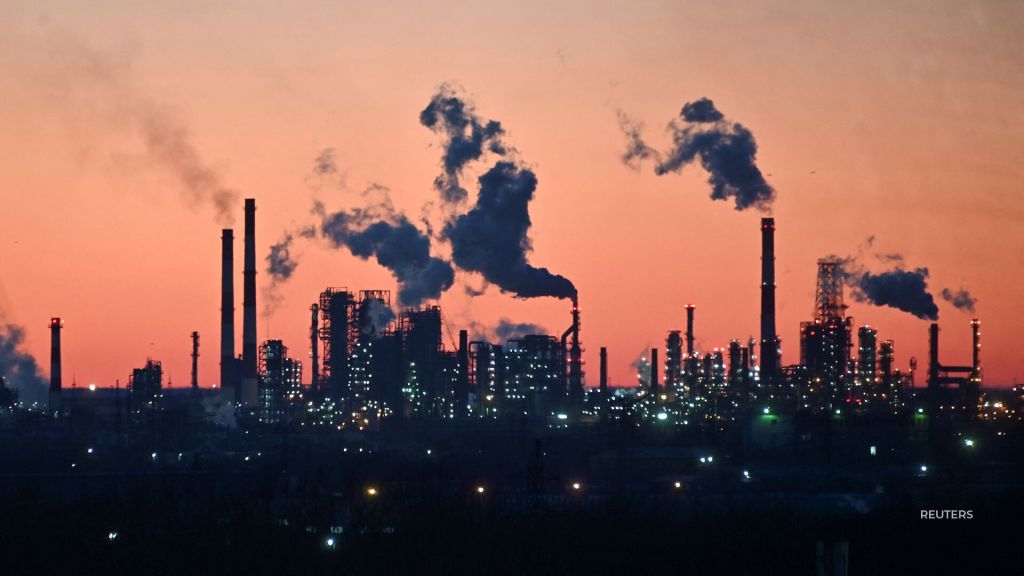Think the Europeans will need to get by without Russian crude? You are 100% correct. But you are not thinking anywhere near big enough.
Most of Russia’s oil fields are both old and extraordinarily remote from Russia’s customers. Fields in the North Caucasus are either tapped out or were never refurbished in the aftermath of the Chechen Wars, those of Russia’s Tatarstan and Bashkortostan provinces are well past their peak, and even western Siberian fields have been showing diminishing returns since the 2000s. With few exceptions, Russia’s oil discoveries of the last decade or three are deeper, smaller, more technically challenging, and even farther from population centers than the older fields they would be expected to replace. Russian output isn’t in danger of collapsing, but maintaining output will require more infrastructure, far higher up-front costs, and ongoing technical love and care to prevent steady output declines from becoming something far worse.
While the Russians are no slouches when it comes to oil field knowledge, they were out of circulation from roughly 1940 through 2000. Oil technology came a long way in those sixty years. Foreign firms — most notably supermajors BP and Shell, and services firms Halliburton and Schlumberger — have collectively done work that is probably responsible for half of Russia’s contemporary output.
The Western supermajors have left. All of them. Just as the Ukraine War began, Exxon and BP and Shell have walked away from projects they’ve sunk tens of billions of dollars into, knowing full well they won’t get a cent of compensation. Halliburton and Schlumberger’s operations today are a shadow of what they were before Russia’s previous invasion of Ukraine in 2014. Between future sanctions or the inability of the Russians to pay them with hard currency, those operations now risk winding down to zero. The result is as inevitable as it is damning: at least a 50% reduction in Russia’s ability to produce crude. (No. Chinese oilmen cannot hope to keep things flowing. The Chinese are worse in this space than the Russians.)
The outstanding question is how soon? Sooner than you think. It’s an issue of infrastructure and climate.
First, infrastructure. All of Russia’s oil flows first travel by pipe—in some cases for literally thousands of miles—before reaching either a customer or a discharge port. Pipes can’t…dodge. Anything that impedes a single inch of a pipe shuts the whole thing down. In the post-Cold War globalized Order when we all got along, this was something we could sing-song-skip right by. But with the Russians dropping cluster bombs on civilian targets, as they started doing on Feb 28…not so much. Whether the Russians destroy the pipes with their indiscriminate use of ordinance (like they damaged a radiation containment vessel at Chernobyl!!!) or Ukrainian partisans target anything that brings the Russians income, much of this system is doomed.
Second, climate. Siberia, despite getting cold enough to literally freeze your nose off in October, doesn’t get cold enough. Most Russian oil production is in the permafrost, and for most of the summer the permafrost is inaccessible because its top layer melts into a messy, horizon-spanning swamp. What the Russians do is wait for the land to freeze, and then build dike-roads and drill for crude in the long dark of the Siberian winter. Should something happen to consumption of Russian crude oil or any of the millions of feet of pipe that take that crude from wellhead to port or consumer, flows would back up through the literally thousands of miles of pipes right up to the drill site. There is no place to store the stuff. Russia would just need to shut everything down. Turning it back on would require manually checking everything, all the way from well to border.
The last time this happened was the Soviet collapse in 1989. It took millions of man hours of help from the likes of BP and Halliburton–and thirty-two years–for Russia to get back to its Cold War production levels. And now, with war on in Ukraine, insurance companies are cancelling policies for tankers carrying anything Russian on Seas Black and Baltic. The French are seizing Russian vessels. The Russian Central Bank has been subject to the strictest financial sanctions ever. It is all falling apart. Again.
Even in the sunshine and unicorn scenario that Putin duct tapes himself to a lawn chair and throws himself into a pool, and a random band of kindly kindergarten teachers take over the Russian government, we should not expect the energy supply situation in Russia to begin to stabilize before 2028, and for us to return to what we think of as the status quo before 2045.
In the meantime, the debate of the moment is expanded energy sanctions. Once everyone concludes that Russian crude is going away regardless, there’s something to be said about pre-emptively sanctioning Russian energy before reality forces the same end result. Moral high road and all that. Bottom line: Uuuuugh! The disappearance of some four to five million Russian barrels of daily crude production will all by itself kick energy prices up to at least $170 per barrel. A global energy-induced depression is in the wind.
But probably not an American one. In the bad ol’ days before World War II there wasn’t a “global” oil price. Each major country or empire controlled its own production and maintained its own–sequestered–market. Courtesy of the American shale revolution and preexisting legislation, the U.S. president has the authority to end American oil exports on a whim and return us to that world. An American export ban would flood U.S. refiners with relatively cheap shale oil. Those refiners will certainly bitch, as their facilities have a taste for crude grades different from what comes out of Texas and North Dakota. But having a functional price ceiling within the United States of roughly $70 per barrel will achieve precisely what Joe Biden is after: cheaper gasoline prices.
The rest of the world? They’ll have to grapple with losing Russian and American crude at the same time. If the “global” price stays below $200, I’d be shocked.
The first rule of geopolitics is place matters. To populations. To transport. To finance. To agriculture. To energy. To everything. The second rule is things can always get worse. The world is about to (re)learn both lessons, good and hard.
This article is an adapted excerpt from Peter’s upcoming book, The End of the World is Just the Beginning.


 Getty Images
Getty Images
 Getty Images
Getty Images
 Getty Images
Getty Images
 Getty Images
Getty Images

















Latest Commentary
We know it is important to hear from a diverse range of observers on the complex topics we face and believe our commentary partners will help you reach your own conclusions.
The commentaries published in this section are solely those of the contributors and do not reflect the views of Straight Arrow News.
Peter Zeihan
Geopolitical StrategistPeace between Israel and Iran, at least for now
Global internet in a precarious state, but that could be a positive
Water wars are an unlikely future
Dr. Frank Luntz
Pollster and Political Analyst‘Take the job seriously’: Why Americans are fed up with Congress
‘If we can shrink it, it will stop growing’: Americans talk debt, deficit
‘I don’t think they care’: Undecided voters explain their reasons
Pete Ricketts
U.S. Senator for Nebraska